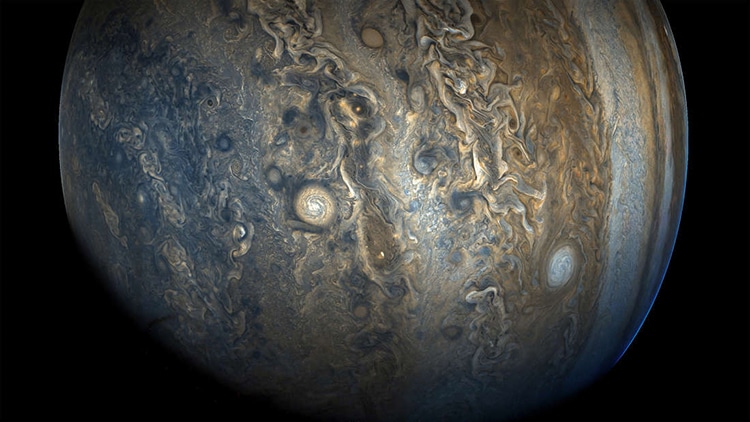
This image taken by the Nasa’s Juno spacecraft shows the “String of Pearls,” one of Jupiter’s eight huge rotating storms. Image: Nasa/SwRI/MSSS/Gerald Eichstädt/Seán Doran
NASA’s Juno space probe first launched on August 5, 2011 from Cape Canaveral, Florida, and after traveling for more than five years, over a distance of 1.74 billion miles, it arrived in orbit around Jupiter on July 4, 2016. During its first exploratory missions, Juno glided beneath the planet’s cloud cover—coming within about 2,100 miles (3,400 kilometers) of the planet—to study its gassy auroras and find out more about the the largest planet in our solar system. Now recently, on October 24th, Juno completed its 8th successful flyby, and by October 31st had transmitted fascinating new data back to Earth.
Anticipating transmission delays due to a solar conjunction—a period of time time when communications between Jupiter and Earth are obscured by close proximity to the sun—engineers sent instructions ahead of time so that Juno’s data was stored onboard until it was safe to transmit back to Earth. “All the science collected during the flyby was carried in Juno’s memory until yesterday, when Jupiter came out of solar conjunction,” explains Juno’s project manager, Ed Hirst from NASA. “All science instruments and the spacecraft’s JunoCam were operating, and the new data are now being transmitted to Earth and being delivered into the hands of our science team.”
From JunoCam’s freely available raw data, new images were processed by citizen scientists Gerald Eichstädt and Seán Doran. The stunning results show the planet’s mysterious north and south poles, as well as gigantic swirling gas storms.
Set to explore Jupiter until 2018, Juno’s next fly-by will take place on December 16th. “There is no more exciting place to be than in orbit around Jupiter,” said Hirst. “Our spacecraft is in great shape, and the team is looking forward to many more flybys of the solar system’s largest planet.”
NASA’s Juno probe successfully transmitted new data from Jupiter on 31st October.
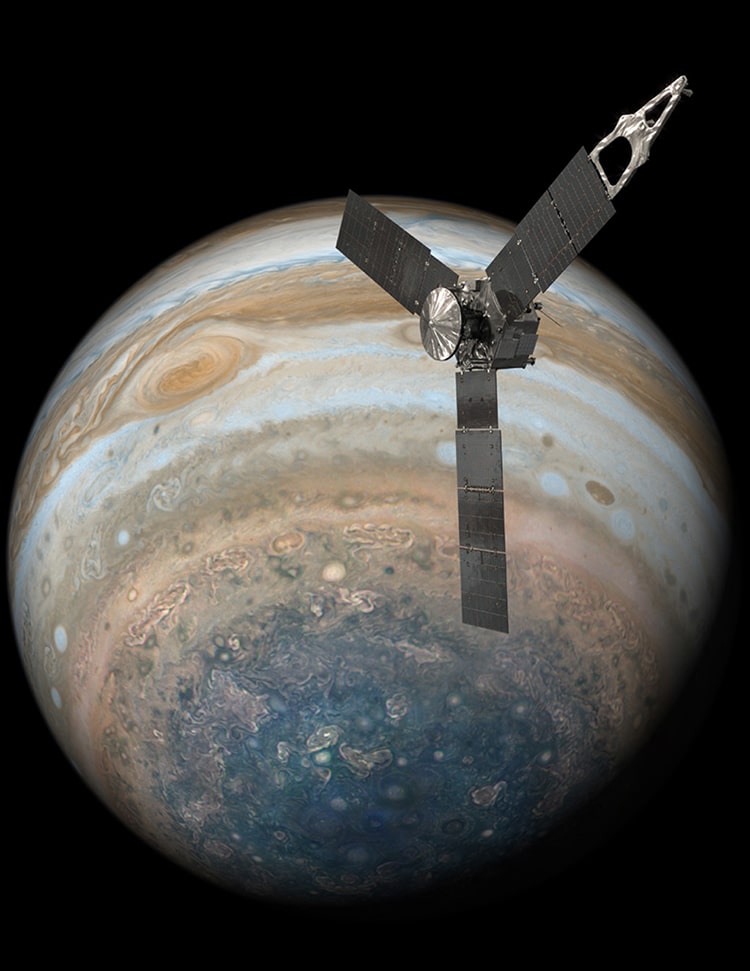
Image: NASA/JPL-Caltech
The latest images—processed by citizen scientists—show the planet’s north and south poles…
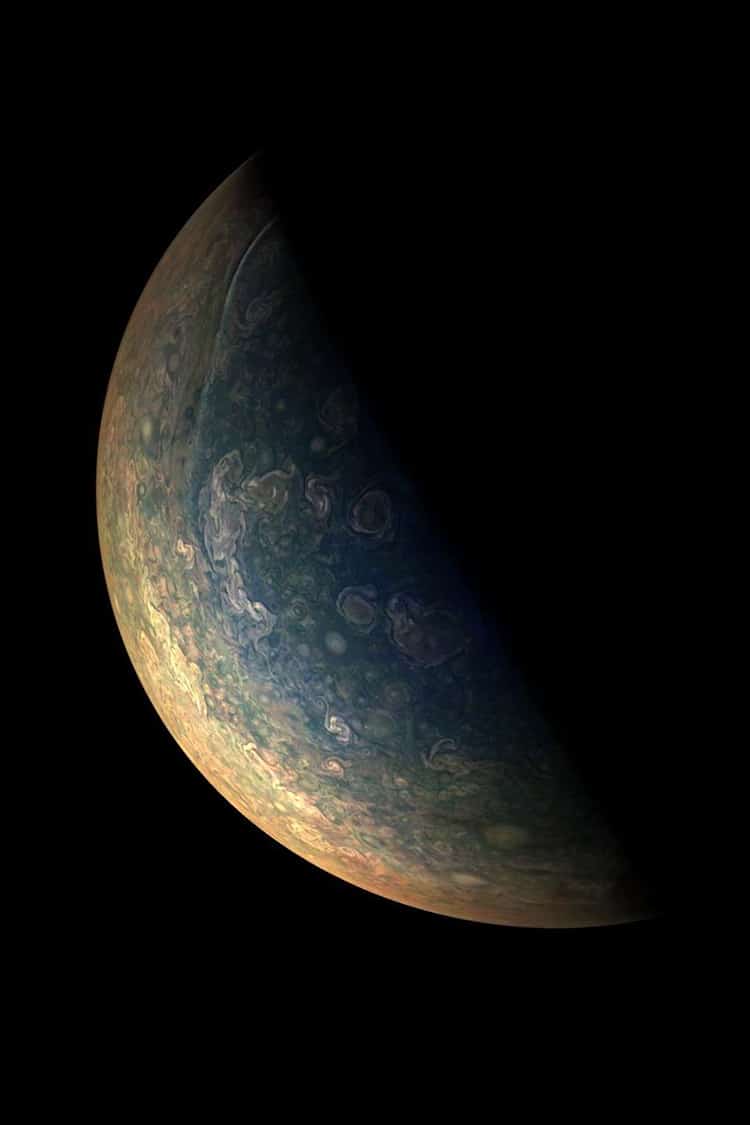
Jupiter’s north pole. Image: NASA / JPL / SwRI / MSSS / Gerald Eichstädt
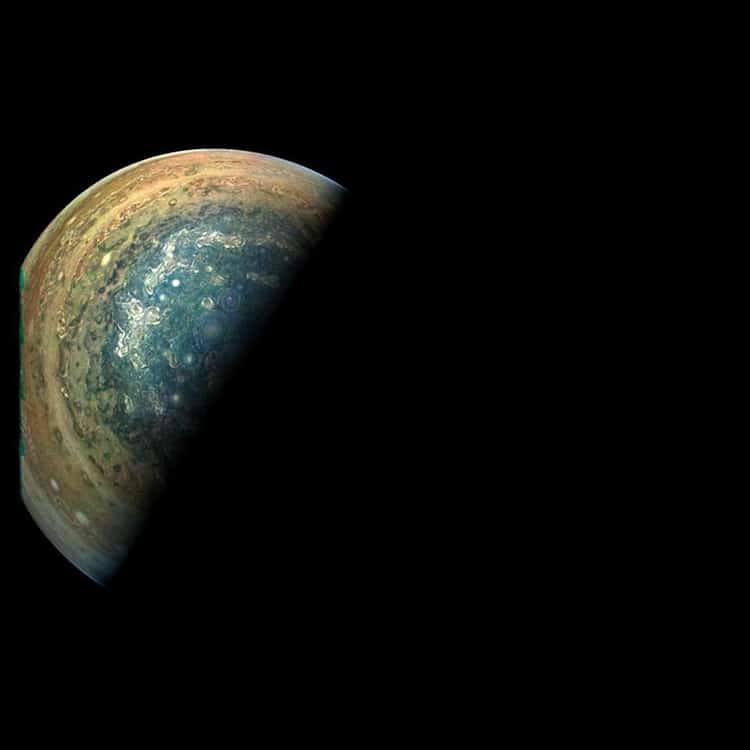
Jupiter’s south pole. Image: NASA / JPL / SwRI / MSSS / Gerald Eichstädt
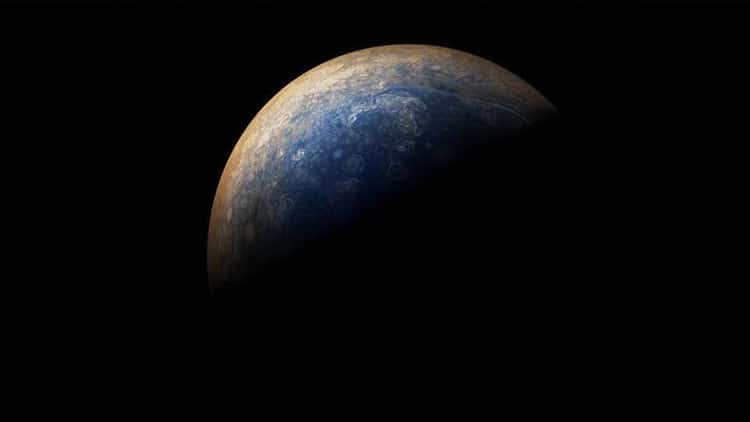
Image: NASA / SwRI / MSSS / Gerald Eichstädt / Seán Doran
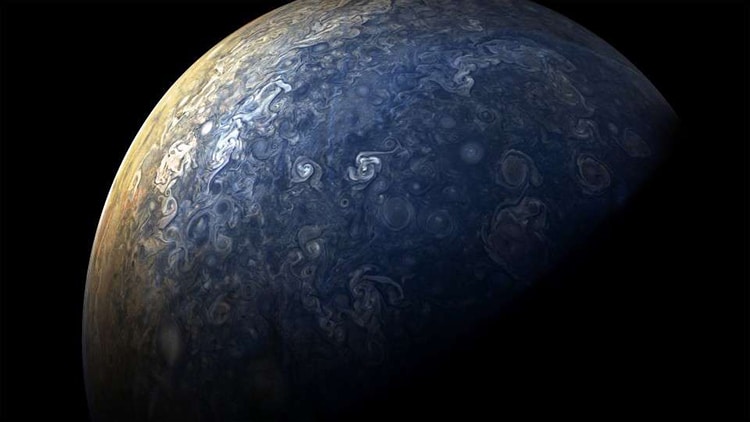
Image: NASA / SwRI / MSSS / Gerald Eichstädt / Seán Doran
…and huge, swirling gas storms.
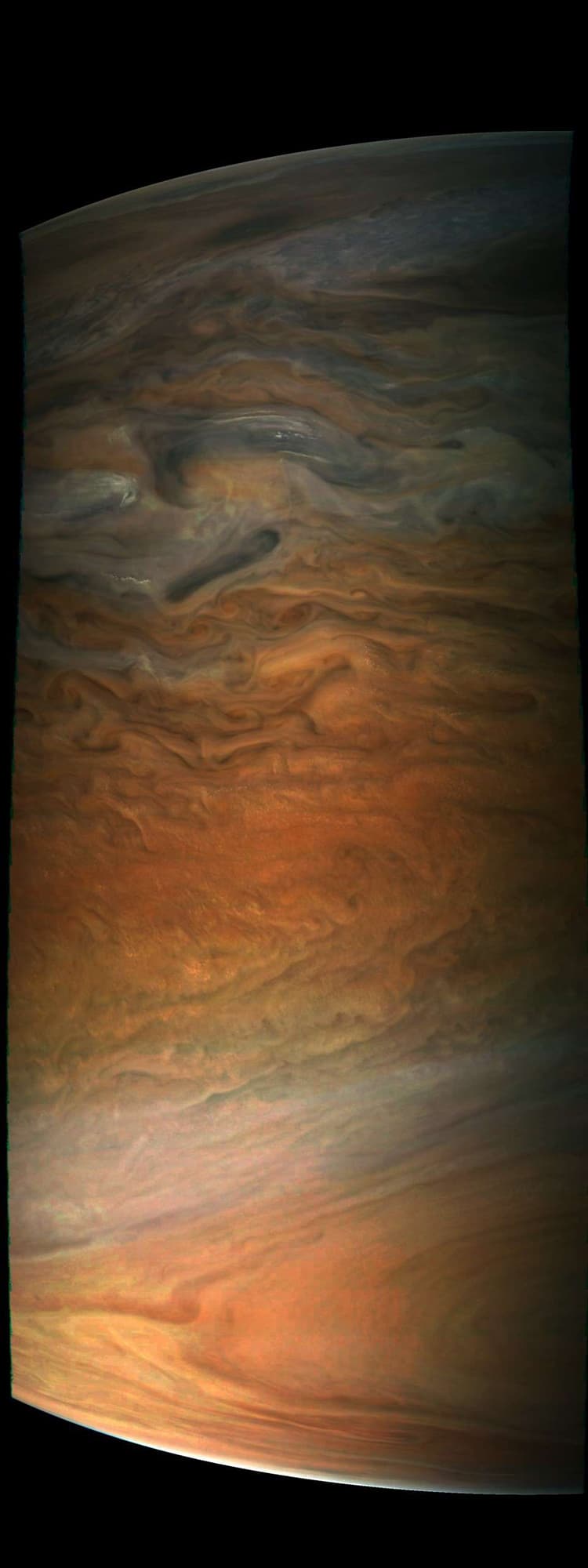
Image: A temperature belt on Jupiter. NASA / JPL / SwRI / MSSS / Gerald Eichstädt
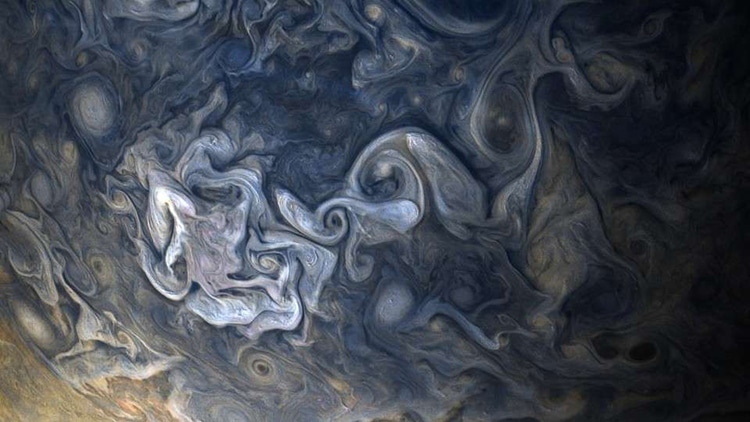
Image: NASA / SwRI / MSSS / Gerald Eichstädt / Seán Doran
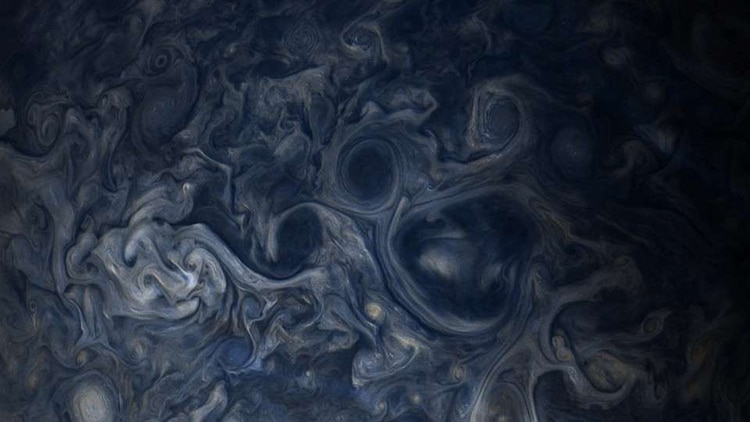
Image: NASA / SwRI / MSSS / Gerald Eichstädt / Seán Doran
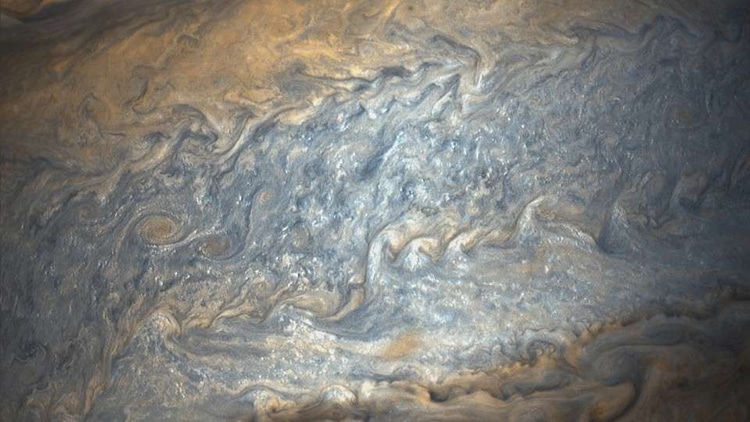
Image: NASA / SwRI / MSSS / Gerald Eichstädt / Seán Doran
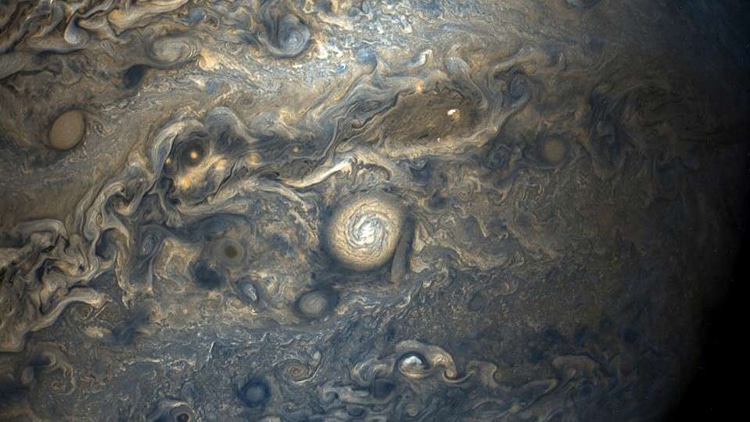
Image: NASA / SwRI / MSSS / Gerald Eichstädt / Seán Doran
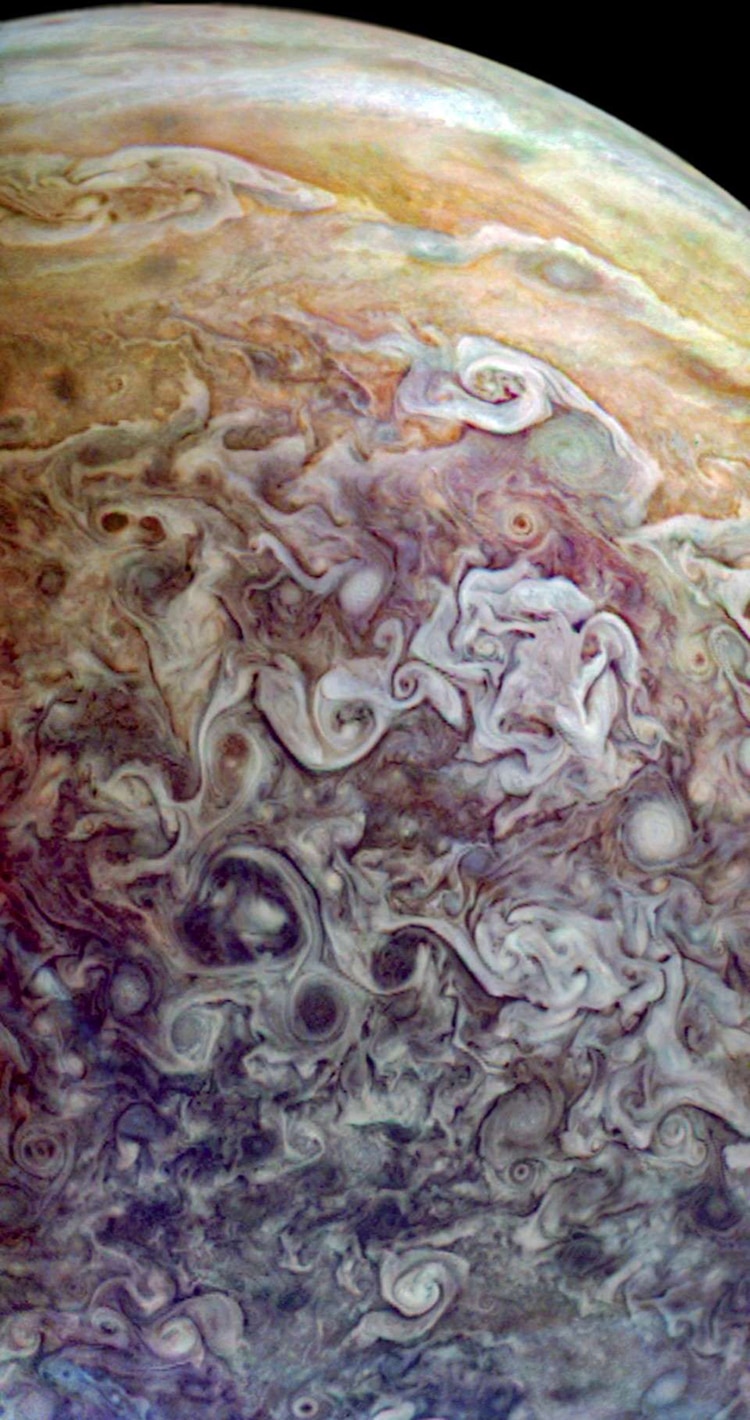
Swirling storm patterns in the northern region of Jupiter. Image: David Marriott/NASA
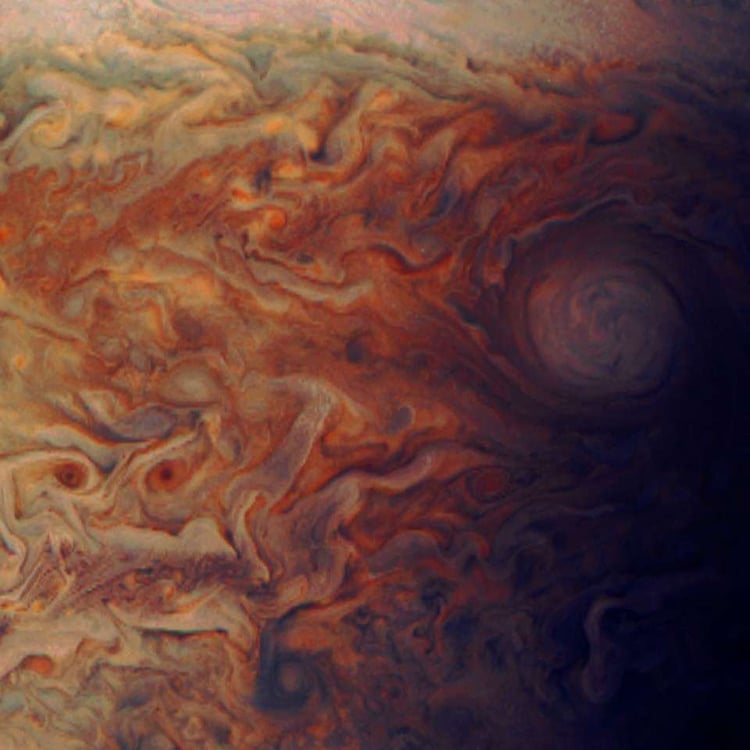
Image: Boduognat-70/NASA
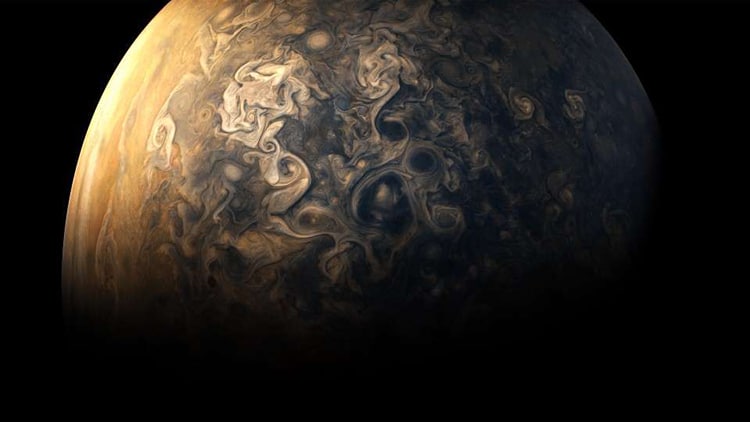
Image: NASA / SwRI / MSSS / Gerald Eichstädt / Seán Doran
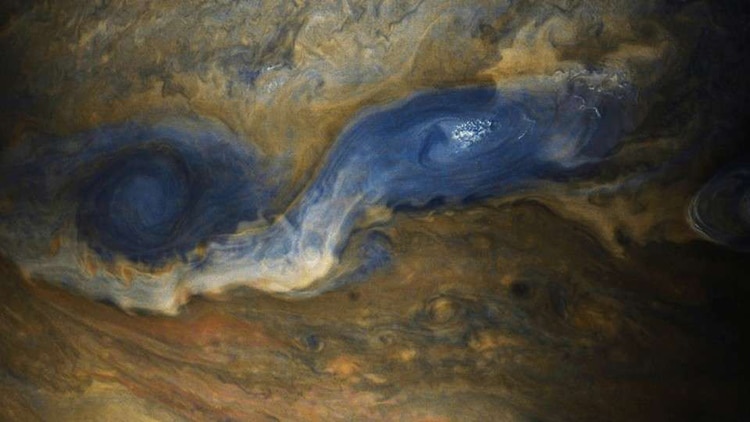
Image: NASA / SwRI / MSSS / Gerald Eichstädt / Seán Doran

A sequence of images from the flyby. Image: NASA / SwRI / MSSS / Gerald Eichstädt / Seán Doran
Juno Probe: Website | Facebook | Twitter | YouTube
h/t: [IFL Science]
All images via NASA.
Related Articles:
NASA’s Juno Space Probe Sends Back Stunning Images of Jupiter
More Stunning Photos of Jupiter Released by NASA
NASA’s Best Photos of the 2017 Total Solar Eclipse
NASA’s Archived Photos of the Moon Landing Animated into Beautiful Short Film
